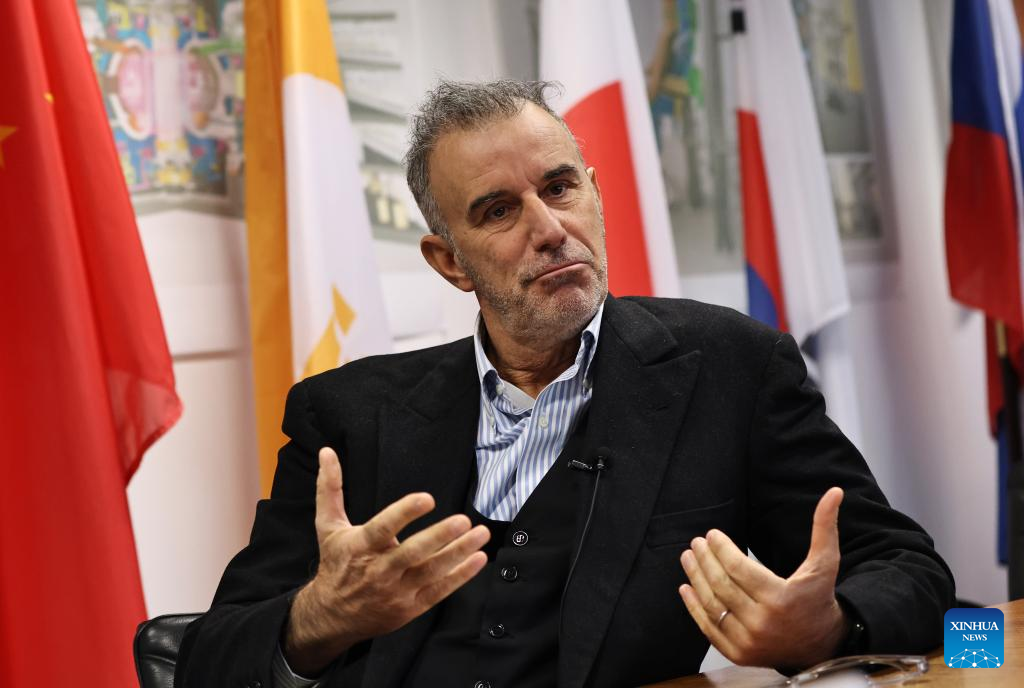
International Thermonuclear Experimental Reactor Director General Pietro Barabaschi gives an exclusive interview to Xinhua in St Paul-lez-Durance, France, Nov. 24, 2023. (Xinhua/Gao Jing)
ST PAUL-LEZ-DURANCE, France, Nov. 30 (Xinhua) -- Despite technical setbacks concerning key tokamak components, construction of the world's largest fusion experiment machine, the ITER Tokamak, continues in the department of Bouches-du-Rhone in southern France.
ITER stands for International Thermonuclear Experimental Reactor, and tokamak is a magnetic confinement device being developed to produce controlled thermonuclear fusion power.
"We are in the process of recovery from the issues in vacuum vessel sectors (dimensional non-conformities) and thermal shields (stress corrosion cracks in cooling pipes). We are on a good track," ITER Director General Pietro Barabaschi told Xinhua in a recent interview.
SETBACKS WILL BE OVERCOME
In the assembly building adjacent to the tokamak complex, work on the massive components of the ITER device continues in parallel with repair work that started in July.
In this vast workshop, where components are prepared before they are transported to the tokamak pit for installation, the faulty components already installed are being lifted out to be disassembled in order to prepare them for repairs.
"These technical setbacks are not fundamental. They are issues that will be overcome. It's not unusual but actually quite normal to have some setbacks in a project of this kind," Barabaschi said.
The 58-year-old Italian, who joined the ITER team in 1993 and began his tenure as director general of the ITER Organization in October 2022, stressed that "ITER is an extremely challenging project."
Conceived as the last experimental step to prove the feasibility of fusion as a large-scale and carbon-free source of energy based on the same principle that powers the Sun and the stars, ITER is designed to be the world's largest tokamak, with ten times the plasma volume of the largest tokamak operating today.
Three conditions must be fulfilled to achieve fusion in a laboratory: very high temperature (on the order of 150,000,000 degrees Celsius); sufficient plasma particle density (to increase the likelihood that collisions do occur); and sufficient confinement time (to hold the plasma, which has a propensity to expand, within a defined volume).
MANY RISKS AHEAD
The ITER Tokamak will weigh 23,000 tonnes, equal to three Eiffel Towers. The vacuum vessel alone, with its ports, blanket and diverter, weighs 8,000 tonnes. Approximately one million components will be integrated into this complex machine.
Also called the world's largest "artificial Sun," the ITER project has been a decades-long collaboration of its seven members -- China, the European Union, India, Japan, South Korea, Russia and the United States.
"A lot of key components have been delivered. Very important elements that are needed to start up the machine are available," Barabaschi said. "We are well ahead of half of the marathon. We have the finishing line in sight."
"It's not simply a marathon where you know the path and you want to keep up the pace with sustained motivation and determination," he explained. "It's navigation and exploration, which means we venture into an adventure, with many, many risks ahead."
ITER's previous target was to create the plasma by 2025. The duration and cost of the ongoing repairs cannot, at this stage, be precisely estimated. According to the director general, the situation will become clear by mid-2024 as his organization is preparing a new cost and schedule baseline for approval by council meeting at that time.
NOT JUST ITER
The electro-mechanical engineer who has dedicated virtually his entire career to fusion research believes that ITER will remain as the center of the growth of a fusion industry as global enthusiasm about the development of fusion energy reaches an all-time high.
"In the future of fusion, essentially driven by power intensity considerations, reactors will have to be relatively large, the size of ITER or maybe even larger," Barabaschi explained. "Only ITER can provide the experience of tokamak or a complex research infrastructure for future fusion of this size."
He welcomed the increase in public and private investment in fusion. "Fusion is not just ITER. Many others joining the fusion race is always good news. The more the merrier."
"ITER will remain as the center of the seven members' fusion research program. Then, the rest, particularly the investment from the private sector, we should cooperate with them to achieve our objective in the most effective way," he said.
KEY ROLE OF MATERIAL
Barabaschi also highlighted the key role material development plays in the success of fusion. "We can develop plasma, get the fire started, maybe tame the fire and make sure that it produces energy. But then we will need the materials that can take the energy of this fire," he said.
"An energy-producing fusion reactor would need very strong materials that can withstand the radiation coming from the plasma. If we don't take care of that, this exploration will not be leading to the final objective," Barabaschi said. ■
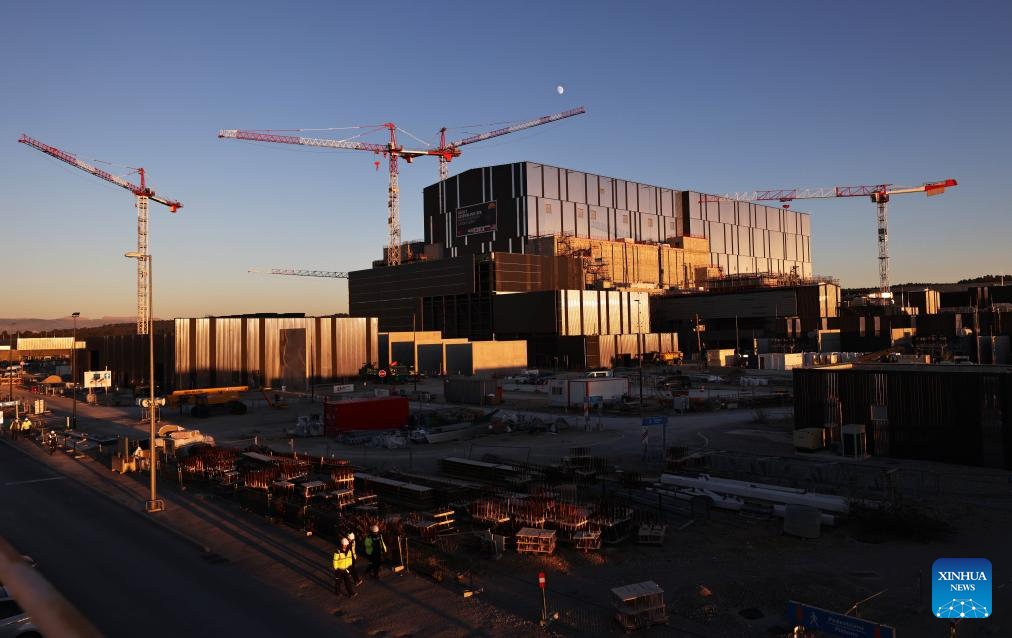
This photo taken on Nov. 23, 2023 shows the assembly building on the construction site of the ITER Tokamak, the world's largest fusion experiment machine, in Saint-Paul-lez-Durance, France. (Xinhua/Gao Jing)
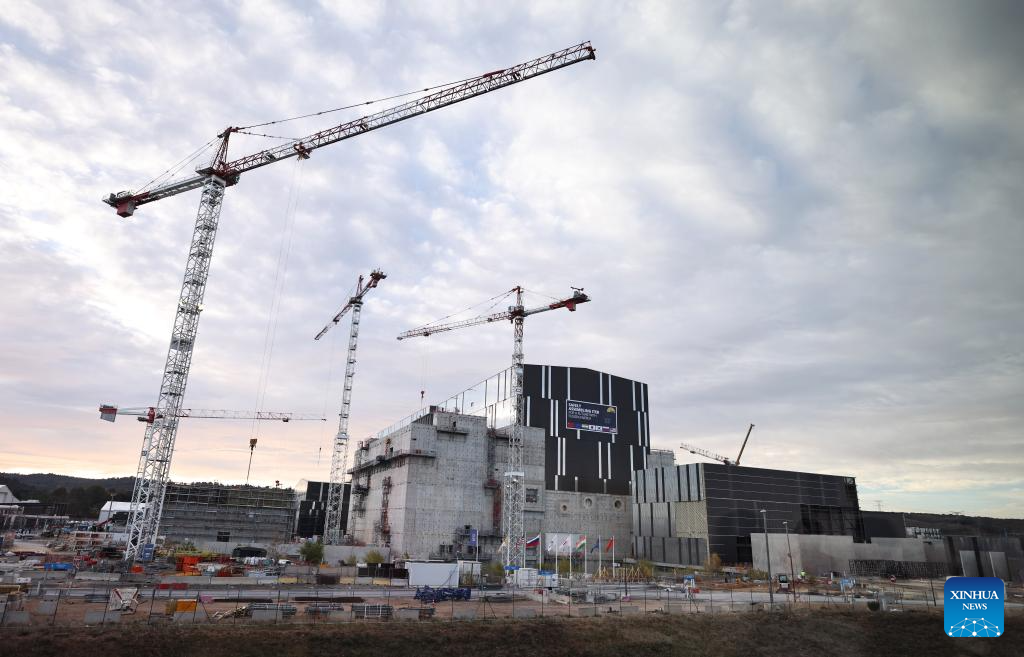
This photo taken on Nov. 24, 2023 shows the assembly building on the construction site of the ITER Tokamak, the world's largest fusion experiment machine, in Saint-Paul-lez-Durance, France. (Xinhua/Gao Jing)

A vast device is seen at a preassembly hall of the world's largest fusion experiment machine, the ITER Tokamak, in St Paul-Lez-Durance, France, Nov. 23, 2023. (Xinhua/Gao Jing)

Technicians check faulty vacuum vessel sectors in the vast preassembly hall on the construction site of the ITER Tokamak in St Paul-Lez-Durance, southern France, Nov. 23, 2023. (Xinhua/Gao Jing)
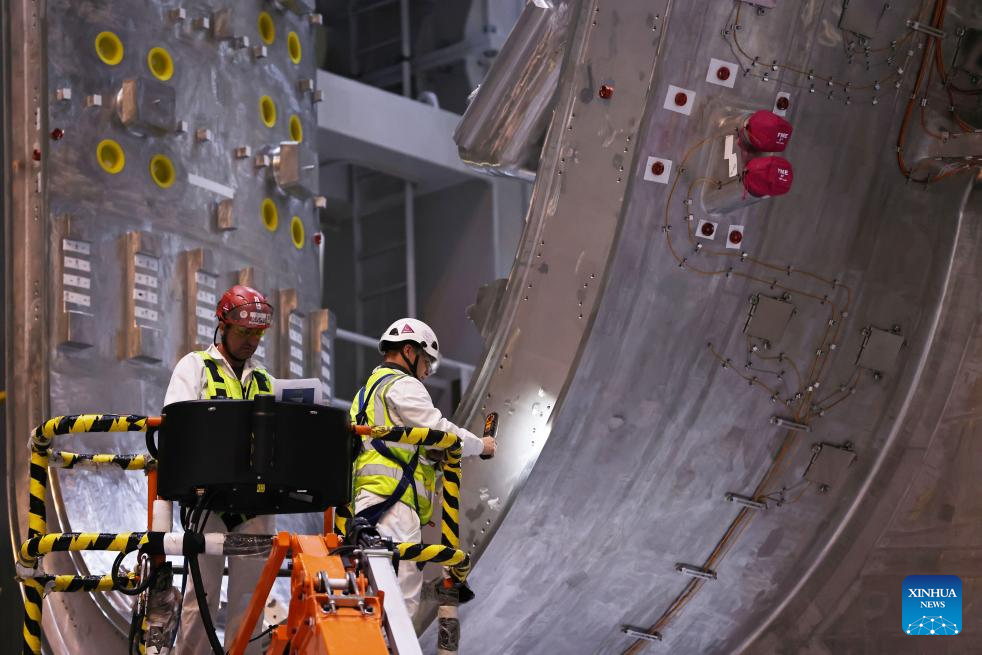
Technicians check faulty vacuum vessel sectors in the vast preassembly hall on the construction site of the ITER Tokamak in St Paul-Lez-Durance, southern France, Nov. 23, 2023. (Xinhua/Gao Jing)

People work at a preassembly hall of the world's largest fusion experiment machine, the ITER Tokamak, in St Paul-Lez-Durance, France, Nov. 23, 2023. (Xinhua/Gao Jing)
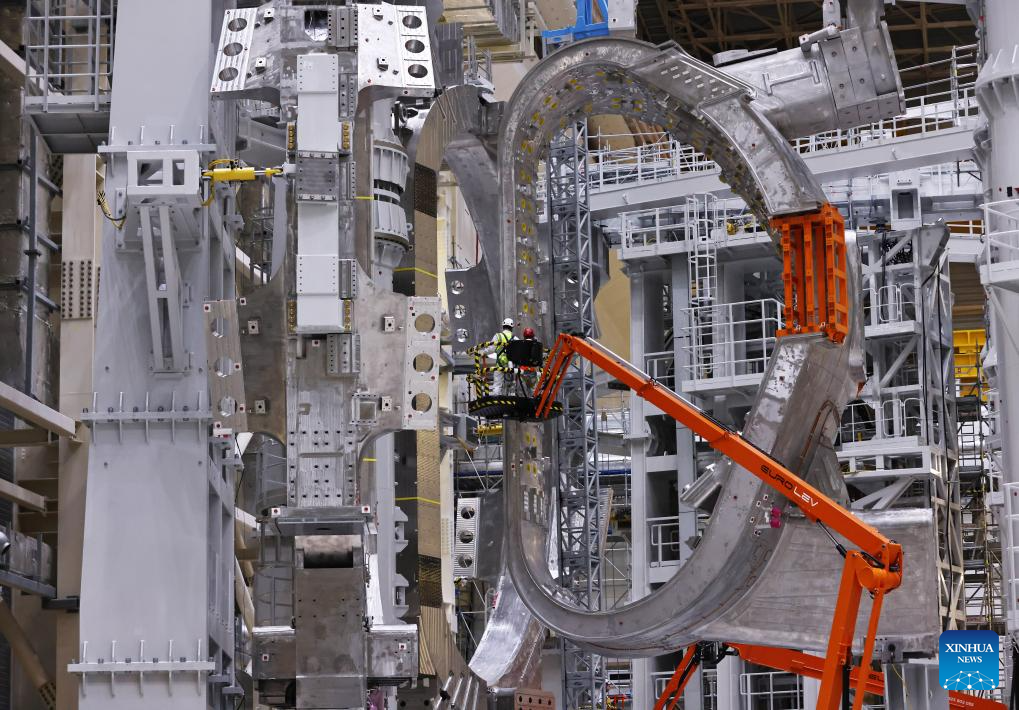
Technicians check faulty vacuum vessel sectors in the vast preassembly hall on the construction site of the ITER Tokamak in St Paul-Lez-Durance, southern France, Nov. 24, 2023. (Xinhua/Gao Jing)

This photo taken on Nov. 23, 2023 shows the assembly building on the construction site of the ITER Tokamak, the world's largest fusion experiment machine, in Saint-Paul-lez-Durance, France. (Xinhua/Gao Jing)
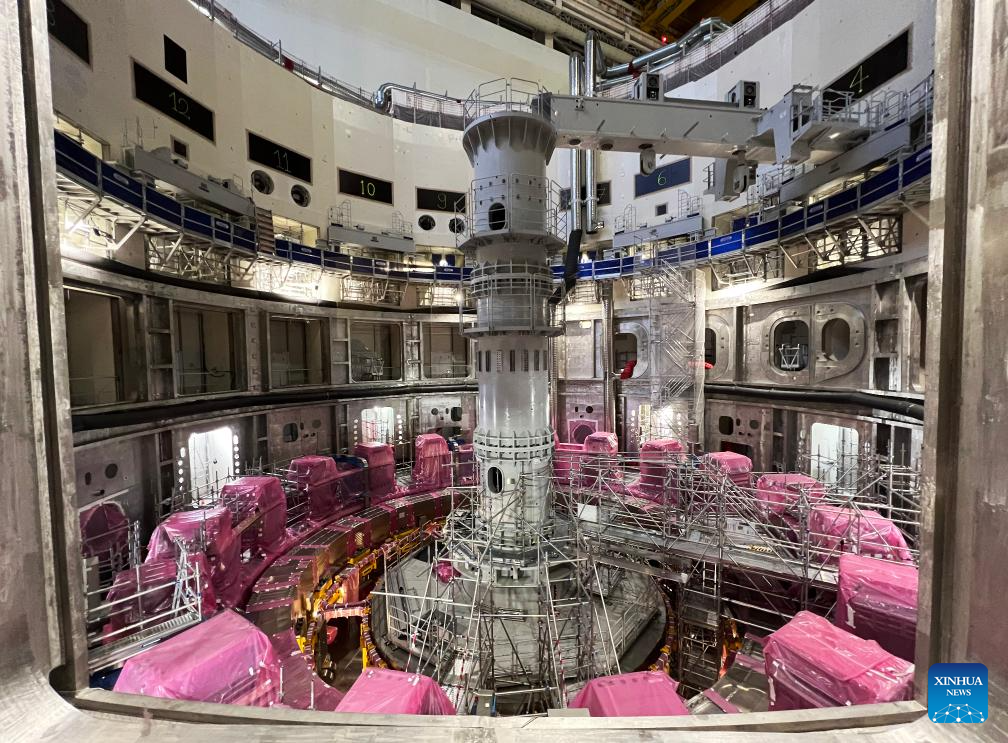
This photo taken on Nov. 23, 2023 shows the tokamak pit on the construction site of the ITER Tokamak in St Paul-Lez-Durance, southern France. (Xinhua/Gao Jing)



